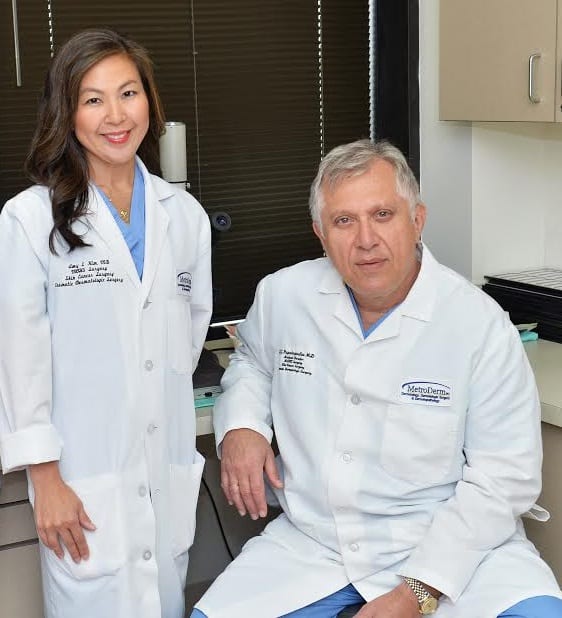
Mohs Surgery: A Highly Specialized Surgery
Mohs surgery is a highly specialized treatment for the total removal of skin cancer. Mohs surgery is named in honor of Dr. Frederic Mohs, the physician who developed the technique. This form of treatment differs from all other methods of treating skin cancer by the use of a unique method for complete microscopic examination of all of the surgically removed tissues, as well as detailed mapping techniques. This methodology provides Dr. Papadopoulos and Dr. Kim, both board-certified dermatologists and Mohs surgeons at MetroDerm, P.C. in Atlanta, GA, the highest chance of removing every cancer cell. Studies show that the procedure yields a cure rate of over 99%. For recurrent skin cancers, the cure rate is approximately 95%.
Together, Dr. Papadopoulos and Dr. Kim have performed more than 20,000 cases of Mohs micrographic surgery. Both are fellows of the American College of Mohs Micrographic Surgery and Cutaneous Oncology (ACMS), the American Society for Dermatologic Surgery (ASDS), and the American Academy of Dermatology (AAD).
MetroDerm, P.C.’s state-of-the-art surgical facility and excellent staff will make sure that your Mohs surgical procedure is performed with the utmost care and comfort. Additionally, our vast experience in surgical reconstruction enhances our ability to give patients an excellent cosmetic, post-operative result.

Types of Skin Cancer
Mohs surgery is recommended for skin cancers on the head, including the scalp, neck, hands, feet, shins, genitalia and most large, recurrent or aggressive cancers.
The most common skin cancers treated with Mohs surgery are basal cell carcinoma, squamous cell carcinoma and melanoma in situ but almost all skin cancers can be effectively treated with Mohs surgery.
About the Surgery
- Step 1: The patient receives local anesthesia to the afflicted area and the visible portion of the tumor is removed. The tissue is color-coded and corresponding reference marks are made on the skin for orientation. This process is called “tissue mapping.” The tissue is taken to the lab where it is frozen and cut into paper thin layers by a cryostat. These layers, only a few cells thick, are then examined under a microscope by MetroDerm, P.C.’s own dermatopathologist, Dr. Adar Berghoff, and pathologist, Dr. Dino Anastasiades. The entire margin of the removed tissue, including the entire circumference as well as the deep margin, is examined for evidence of remaining tumor.
- Step 2: If any remaining cancer cells are found under the microscope, they are marked on the patient map denoting the location and additional layers are taken. This layer will only include the smaller area in which tumor is remaining. Again, the tissue is taken back to the lab, processed, and examined under the microscope.
- Step 3: The “mapping” technique allows for removal of only the cancerous tissue and preservation of the nearby healthy tissue, thus keeping the wound as small as possible.
- Step 4: The Mohs layers will continue until all of the cancerous tissue has been successfully removed.
- Step 5: Once the cancer has been completely removed, Farzad R. Nahai, M.D. performs the reconstruction that will give the best functional and cosmetic outcome.
Every patient is unique; therefore, results of treatment may vary.
If you have a suspicious skin lesion, do not ignore it. Call MetroDerm, P.C. to schedule an examination with Dr. Papadopoulos or Dr. Kim. If you have been left with an unsightly scar from previous surgery, contact Dr. Nahai at The Center for Plastic Surgery at MetroDerm, P.C. Dr. Nahai can surgically correct your scar so that it is less noticeable and smooth. Dr. Nahai and his staff at MetroDerm, P.C. serve patients throughout the metro Atlanta, GA, area including Roswell, Milton, and Brookhaven. Visit MetroDerm, P.C. for all of your skincare needs.
